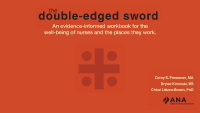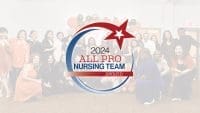It’s the bottom of the ninth hour, the Add-On Board is fully loaded, and the Operating Room (OR) team is worn out. The evening shift nurse has called in injured, and the manager has to pick a nurse to cover the remaining cases. It’s a no-win situation for all involved.
The scenario is a familiar game played in America’s surgery departments all across the country. In fact, a week in the life of an OR registered nurse (RN) can look like this: Three 12-hour shifts back to back with 12 hours of scheduled call in between one or more of those days and 48 hours of scheduled call for the weekend as well, yielding the possibility of working greater than 90 hours in 1 week as a stark reality.
What’s more, nurses may not be able to take breaks or lunches. Frankly, this spells disaster in several forms. Not only are both the patients’ and the nurses’ health at risk, but so is a nurse’s license should he or she make an error. Recently while reading through my professional organization’s public policy electronic resource, I noticed a collaborative political movement nationally through state legislation barring mandatory overtime. As a seasoned perioperative RN, I personally know far too well the feeling of exhaustion from being on call, and the feeling of frustration from the inability as an employee to do anything about it, as call is mandatory overtime. Therefore, my desire to join this political fight is only natural.
The stats
Studies show that at minimum inadequate sleep can cause depression, family strife, increased stress, and increased injuries in the workplace.1-4 Maruff et al. recommend individuals “not engage in cognitively demanding and high-risk activities, such as driving, when they have been awake for more than 20 hours,” because they have shown that wakefulness greater than 20 hours causes cognitive impairments equal to that of a blood alcohol level impairment that would render one under arrest if operating a vehicle.5 What’s more, the Franklin Institute reports on the effects of sleep deprivation by citing the work of Dr. Van Cauter, which demonstrates how fatigued individuals can develop pathophysiological changes that alter insulin function, memory, blood pressure, and weight levels.6
In the OR, nurses are at great risk for developing these health impairments, as poor working conditions, such as extended shifts, minimal breaks, increased call hours, and minimal rest between shifts lend to workplace fatigue and inadequate sleep.7 Although tired and overworked, OR nurses continue to care for their patients. Like other nurses, they are notorious for placing the needs of others before their own. However, it is not just nurses who are affected by fatigue. In fact, it is wise to note that nurse fatigue has consequences for our patients as well.
Patient safety is compromised, as the tendency for error is increased when nurses are sleep deprived. The report To Err is Human exposed the alarming reality that mistakes in health care negatively affect up to 98,000 patients unnecessarily each year.8 There is a strong relationship between nurse fatigue and increased patient mortality, increased medication errors, incomplete nursing tasks, failure-to-rescue events, and other negative effects.9
Since studies show more than 75% of nurses work 12-hour shifts, many working greater than 20 hours in one shift, and that the average American nurse only receives 6.9 hours of sleep per night during the week, one only needs to make a quick mental connection between patient risk and nurse fatigue to understand why professional and governmental organizations, such as the Association of periOperative Registered Nurses (AORN), the Institute of Medicine (IOM), the American Nurses Association (ANA), and the World Health Organization (WHO), are so concerned.10
Batter up
The IOM stepped up to the plate in the late ’90s in an effort to improve the quality and safety of health care. Through the years via savvy advertising, education, and research, a multifaceted and concerted movement began to immerge: Patient Safety Goals were established, the Centers for Medicare & Medicaid Services (CMS) developed pay-for-performance guidelines, and WHO, with the help of Dr. Atul Gwande, developed a Safe Surgery Checklist. Consistent with all of this, a political movement was underway in a battle against mandatory overtime for nurses. In 2004, the IOM released recommendations and solutions specific to nurse work hours.11 However, despite the overwhelming evidence against extensive work hours and the IOM’s recommendations to use shifts exceeding 8 hours sparingly, the 12-hour shift is still the most common shift assigned to nurses.12
A new game plan
Despite the above-mentioned efforts, nursing is still caught between a rock and a hard place. As nurses, we know we are held accountable for our actions by our respective state board of nursing, and we know the evidence is overwhelmingly against extensive work hours. We want to be well rested and provide high quality of care for our patients, but mandatory overtime and unsafe on-call practices are still allowed.
We need a new game plan. It’s time to take matters into our own hands, individually and collectively. “Nursing, like other professions, is responsible for ensuring that its members act in the public interest in the course of providing the unique service society has entrusted to them.”13
Because we know the ill effects of workplace fatigue, it is our ethical duty to change the conditions that tie our hands from relinquishing our care of patients when we are no longer fit for duty. The sixth provision in the Guide to the Code of Ethics for Nurses states: “The nurse participates in establishing, maintaining, and improving healthcare environments and conditions of employment conducive to the provision of quality health care and consistent with the values of the profession through individual and collective action.”14
Further, as nurses we are trusted. The image of nursing could be compromised with poor nursing outcomes, impacting the future of nursing leadership and its influence on important healthcare policies: “Errors…are costly in terms of loss of trust in the health care system by patients and diminished satisfaction by both patients and health professionals.”8 Therefore, for our individual self, our colleagues, and our patients, it is time to take a stand.
Put me in, coach
Professional nursing organizations such as AORN and The Oklahoma Nurses Association are using their websites to warn nurses about the correlation between nurse fatigue and increased error rates, specifically medication errors.15,16 ANA has added the fight against nursing workplace fatigue to their Nationwide State Legislative Agenda, and AORN has collaborated with ANA by developing safe on-call position statements and providing professional members with links, tools, and resources to assist with ANA’s agenda.15,17
To date, only “sixteen states have restrictions on the use of mandatory overtime for nurses”.17 We have much work to do, and nurses all across the country can make a contribution in the fight against mandatory overtime by becoming involved in at least two ways.
The first is to ensure an active membership within ANA. There will be power in numbers as we support the Association’s efforts nationally. As previously stated, many organizations provide tools that enable you to become active in current political agendas.
For example, AORN provides links in which members can quickly access and communicate with their prospective United States representatives. As a result, I have written an e-mail to my Indiana senator, congressman, and governor drawing attention to the fact that current Indiana law for hospitals states if a hospital provides surgical services they must do so with “acceptable standards of practice and safety.” 15 I indicated the value and contributions of Indiana nurses and explained the dilemma in which we are placed when trying to uphold the law and work mandatory overtime, given the evidence showing excessive work hours to be detrimental to patient safety. I addressed a shared responsibility for all parties—state, organization, and professional—that should show collaboration toward achieving high-quality, safe, timely, effective, efficient, and patient-centered care. I requested the state restrict hours worked for nurses by barring organizations from creating environments in which it is difficult or impossible to deliver optimal and safe care, as the law suggests. I suggested organizations work with their leadership teams and advanced practice nurses to develop effective staffing plans, stream-lined and efficient processes, and optimal working environments, and that nurses should be good stewards of their time and the organization’s resources. We should be financially savvy, respecting the needs of both our patients and the organizations for which we work. I explained that when all three parties come to the table, we should do so as a team, embracing a common goal of safe, high-quality care as stated above, and we should do so with a mindset toward ensuring each team member’s needs are met. Whether it is an e-mail, a phone call, or a traditional letter to local and state representatives, each nurse must take his or her swing in the political arena. Our individual yet collaborative voice and contributions at the state level will benefit nurses nationally.
Another way nurses can get involved in the fight against mandatory overtime is to add power to the state and national movement by being politically active within the organizations in which we are employed. The same techniques used at the state level can be used institutionally as well. Staff nurses and advanced practice nurses alike can serve on policy and procedure committees and draft evidence-based proposals restricting mandatory overtime and implementing safe on-call practices. We can conduct research related to nurse fatigue and patient outcomes. More research is needed to strengthen our defense, as it was noted that most studies site Rogers’ work for nursing fatigue.10 In addition, we can track quarterly data related to morbidity, mortality, quality risk, incident reports, and so forth. The data gathered from the individual organizations can then be compiled and published for utilization as evidence to further the movement toward state and national levels.
The key is to do something. Start somewhere; get in the game. What actions can you imagine yourself taking in regard to these issues?
Additionally, nurses can help organizational leaders realize nurse fatigue’s negative financial impact on the healthcare dollar. With pay-for-performance measures initiated by CMS, healthcare centers with poor outcomes and decreased patient satisfaction resulting from nurse fatigue will suffer financially as their reimbursement rates decline. Furthermore, nurse fatigue burdens healthcare organizations with increased expenses regarding workman’s compensation and orientation for new hires as a result of increased staff turnover. In fact, fatigue is associated with $12.5 billion in personal and property loss per year. While this number may or may not include healthcare expenses, it certainly warrants concern as we struggle with the appropriate stewardship of healthcare resources.18 Therefore, we must help organizational leadership identify cost-saving strategies in other areas as an alternative to eliminating or freezing full time equivalents for nursing.
Lastly, the nurses can assist organization leadership and fellow bedside nurses in identifying processes for ensuring safe nursing care. Barriers need to be set in place to ensure patient safety is not compromised. For example, in reality nurses sometimes request to work excessive hours because they need the money. Perhaps they are unethical and knowingly work while exhausted; however, “the effects of sleep loss are insidious and until severe, are not usually recognized by the sleep-deprived individual.”12 Therefore, a buddy check or a mandatory cognitive test for those who desire to work past the recommended time frame may prove beneficial. Fatigue tools such as the Fatigue and Risk Index are available to help nurse leaders with this issue.19
A tied ball game
Wouldn’t it be great if everyone came out a winner—the patients, the nurses, and the organizations? Although my focus is strategically tailored to the perioperative arena for the purpose of a grassroots movement, all nurses are at risk for workplace fatigue. All patients deserve the best possible care, all nurses should be entitled to a healthy work environment, and all healthcare organizational owners should be provided the same opportunities to be successful as non-healthcare entities. The reality is, cooperation within this triad is essential to achieve a win-win situation.
The significance of this issue, nurse fatigue and mandatory overtime, is so overwhelmingly backed by evidence that it was difficult to grasp why it is still up for debate. The only conclusion I can derive is that the focus is not balanced; the game is not being played with a full team. No one wins in this alone.
Prolonging the game is painful and detrimental to all involved. It’s time for everyone to equally step up to the plate and play ball!
Carolyn J. Clancy is the perioperative staff development coordinator at The New Wishard/Eskenazi Health and a clinical nurse specialist student at Indiana University Graduate School of Nursing in Indianapolis.
From our readers gives nurses the opportunity to share experiences that would be helpful to their nurse colleagues. Because of this format, the stories have been minimally edited. If you would like to submit an article for From our readers, click here.
Selected references
1. Nakata A. Work hours, sleep sufficiency, and prevalence of depression among full-time employees: a community-based cross-sectional study. J Clin Psychiatry. 2011;72:(5):605-614.
2. Fisman D, Harris A, Rubin M, et al. Fatigue increases the risk of injury from sharp devices in medical trainees: results from a case-crossover study. Infect Control Hosp Epidemiol. 2007;28(1):10-17.
3. Mellor G, St. John W. Work safety during early fatherhood. AAOHN. 2010;58(7):297-301.
4. Stucky E, Dresselhaus T, Dollarhide A, et al. Intern to attending: assessing stress among physicians. Acad Med. 2009;84(2):251-257.
5. Maruff P, Falleti M, Collie A, Darby D, McStephen M. Fatigue-related impairment in the speed, accuracy, and variability of psychomotor performance: comparison with blood alcohol levels. J Sleep Res. 2005;14:21-27.
6. The Franklin Institute. Renew—sleep and stress. http://www.fi.edu/learn/brain/sleep.html. Accessed May 15, 2012.
7. Association of periOperative Registered Nurses. Position statement on safe work/on-call practices. http://www.aorn.org/WorkArea/DownloadAsset.aspx?id=21927. Accessed May 15, 2012.
8. Institute of Medicine. To Err Is Human: Building A Safer Health System. http://www.nationalacademies.org/hmd/~/media/Files/Report%20Files/1999/To-Err-is-Human/To%20Err%20is%20Human%201999%20%20report%20brief.pdf. Accessed May 15, 2012.
9. Garrett C. The effect of nurse staffing patterns on medical errors and nurse burnout. AORN J. 2008;87(6):1191-1204. https://at.phcc.edu/NUR2820/PDFs/MOD3/Staffing_Ratios.pdf. Accessed May 15, 2012.
10. Rogers A. The effects of fatigue and sleepiness on nurse performance and patient safety. In: Hughes RG, ed. Patient Safety And Quality: An Evidence-Based Handbook For Nurses. Rockville, MD: Agency for Healthcare Research and Quality; 2008:509-545.
11. Institute of Medicine. Crossing the quality chasm: the IOM health care quality initiative. http://www.nationalacademies.org/hmd/Global/News%20Announcements/Crossing-the-Quality-Chasm-The-IOM-Health-Care-Quality-Initiative.aspx. Accessed May 15, 2012.
12. Rogers A, Watkins S. Preventing staff nurse fatigue and improving patient safety: the role of the nurse leader. The American Organization of Nurse Executives. PowerPoint presented at the American Organization of Nurse Executives Annual Meeting & Exposition, April, 2011 in San Diego, CA. http://www.dcprovidersonline.com/aone_media/?event_id=AONE_MEDIA101. Accessed May 15, 2012.
13. American Nurses Association. Nursing’s Social Policy Statement: The Essence of the Profession. Silver Spring, MD: American Nurses Association; 2010.
14. American Nurses Association. Provision Six. In: Fowler DM, ed. Guide to the Code of Ethics for Nurses: Interpretation and Application. Silver Spring, MD: American Nurses Association; 2008:71-88.
15. Association of periOperative Registered Nurses. Government affairs: Indiana RN circulator laws and language. https://staging.aorn.org/customapps/GovernmentAffairs/StateInfo.aspx?state=IN. Accessed May 15, 2012.
16. Oklahoma Nurses Association. Study links long hours to increased errors. http://www.oknurses.com/displaycommon.cfm?an=1&subarticlenbr=58. Accessed May 15, 2012.
17. American Nurses Association. Mandatory overtime. http://www.nursingworld.org/MainMenuCategories/Policy-Advocacy/State/Legislative-Agenda-Reports/MandatoryOvertime/Mandatory-Overtime-Summary-of-State-Approaches.html. Accessed May 16, 2012.
18. Tabone S. Nurse fatigue: the human factor. Texas Nursing Association; June-July, 2004. Accessed May 15, 2012.
19. Flin R, Winter J, Sarac C, Raduma M. Human factors in patient safety: review of topics and tools. World Health Organization; 2009. http://www.who.int/patientsafety/research/methods_measures/human_factors/human_factors_review.pdf. Accessed May 15, 2012.



















3 Comments.
Why do nurses in our area work 12 hour shifts? Because they want to and they threaten to go to another organization if they don’t get them. While they say they want more time at home, there are some who work for two organizations and so they are trying to balance all those work hours.
I just left a few months ago an OR where I was working 4 or 4 12 hr shifts taking call and in a room all day with spine cases.The manager of the OR was always free but did not give breaks or lunches or help turn over rooms.Her explanation was she was to be available for the sugeons if they had any questions.She would have not been over 50 feet from front desk at any time also they could have hired a unit clerk to answer phone.It has still not changed and the nurse are getting killed with OT.
Mandatory OT is certainly not exclusive to OR, and lacking sufficient staff to call on is the nursing supervisor’s fault. Back when, if there was no staff to cover a call-in, the charge nurse or supervisor stepped up til someone was found ~ the responsibility went with the titles. There are many of us who only want to work part-time, or on-call, but hospitals are phasing that out as determinedly as requiring new-hire RN’s to have to have bachelor’s degrees.